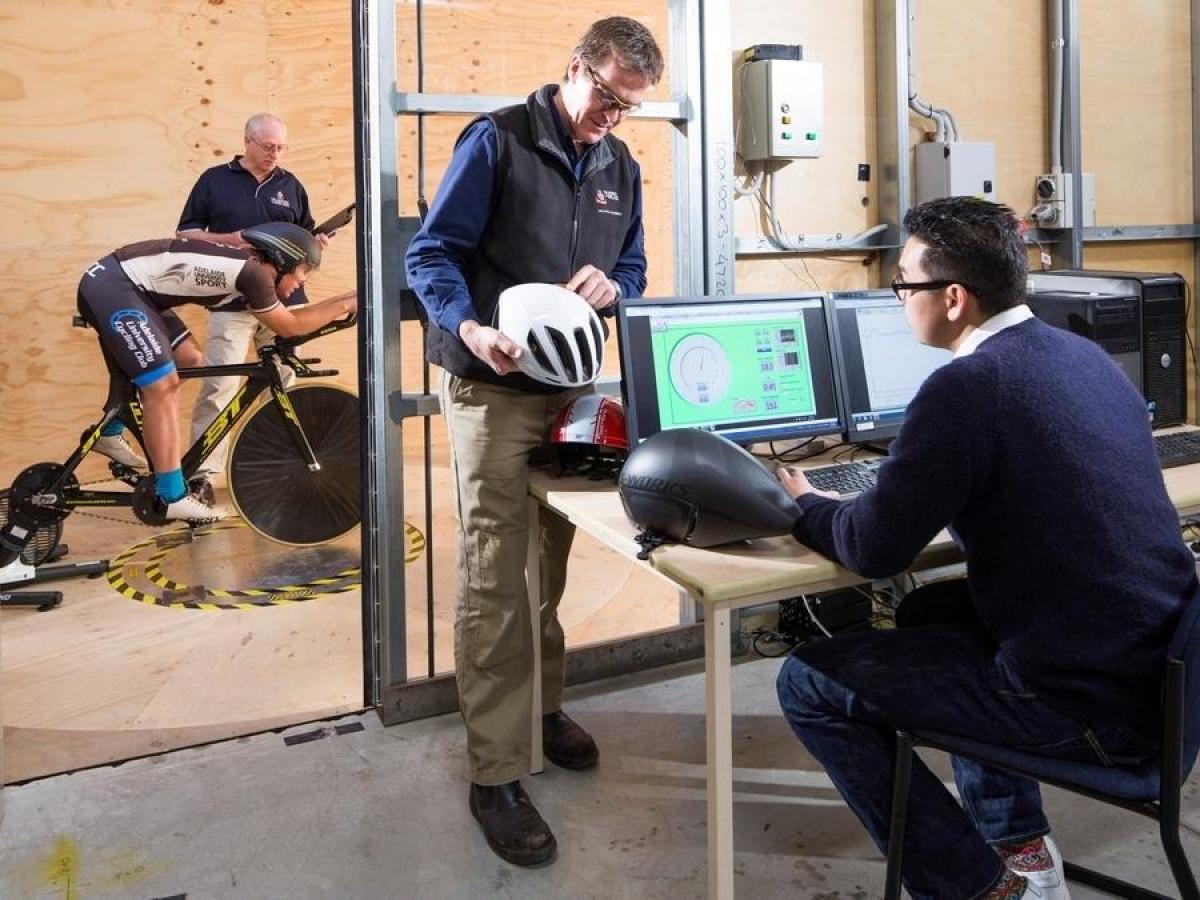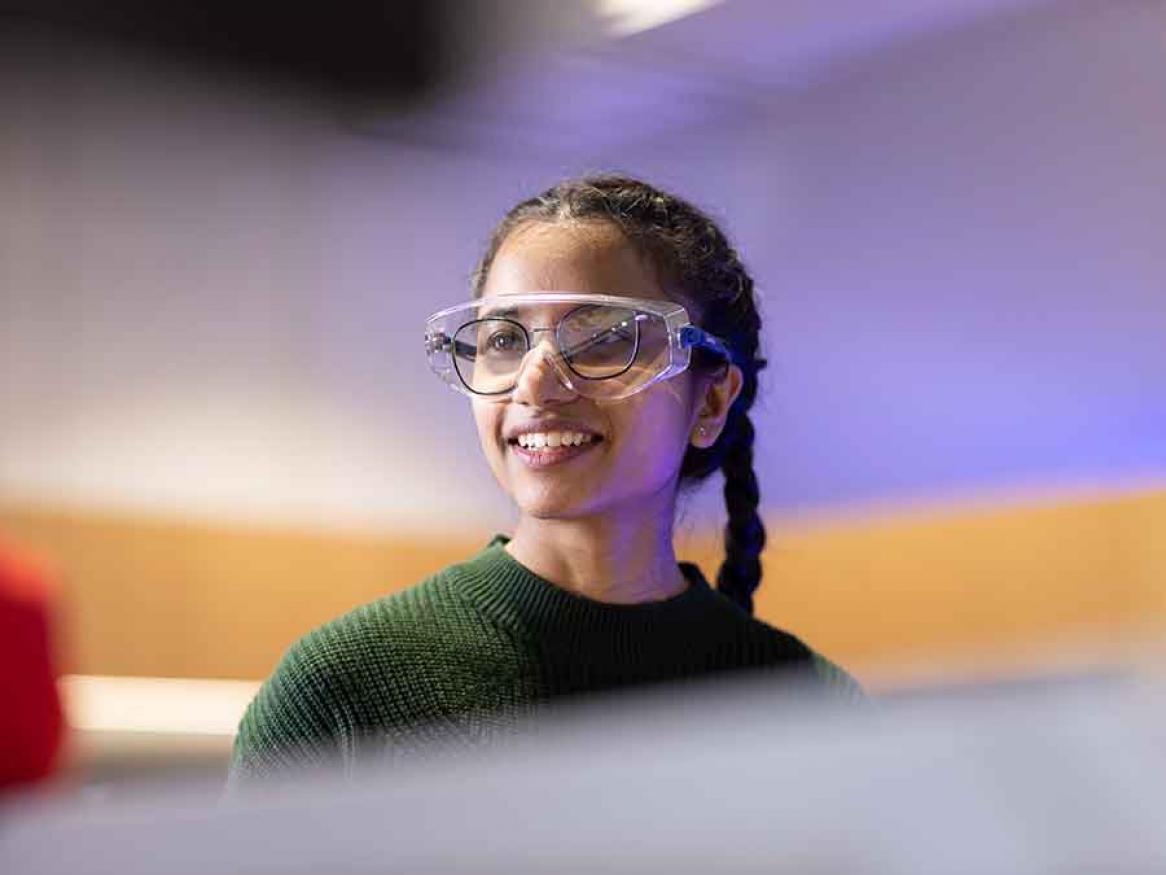Sports Engineering and Biomechanics
Sports engineering and biomechanics focuses on the design and development of sports equipment, along with the study of forces and their effect on living things.

Our research focuses on the development of new technologies for sporting applications, and the prevention of athlete injury. This includes designing and developing:
- training equipment to facilitate skills development (e.g. a bowling machine for cricket training)
- innovative test instruments and systems to improve understanding of athlete movement, and investigating strategies to improve performance and prevent injury
- aerodynamically efficient equipment, particularly low-drag cycling equipment
- bio-materials’ (such as bone and dentine) response to high stress levels
- the mechanics of athlete movements—such as the golf swing or wheelchair propulsion—and the effects of loading on the spine, to prevent injury
- orthopaedic and injury biomechanics—studying musculoskeletal and nervous systems in normal, diseased and injured states
- multi-scale testing of mechanical and materials characterisation of hard tissues, such as bone and teeth, and biomaterials
- advanced manufacturing of dental materials for restorations.
-
Research impact
Our sports engineering and biomechanics research can be applied across all sporting disciplines, and any industry involving the human-machine interface. These include: football (all codes); cricket; cycling; golf; tennis; kayaking; para-sports, such as wheelchair rugby, sprinting and marathon; defence industries; and manufacturing and materials-handling industries.
We are working to develop more effective equipment, improve performance and reduce injury across a wide range of sports and human activity. Some of our recent achievements have included:
- 3D golf swing movement-pattern analysis to improve performance and prevent injury
- examining spinal movement patterns and developing activity-recognition algorithms for application in aged care and workplace services
- measuring diabetes patients’ gait patterns to help prevent ulcers and consequent lower limb amputations
- designing low-drag helmets, wheels, frames and clothing to improve elite cyclists’ performance
- improving wheelchair design and customisation to optimise para-athletes’ force delivery, enhancing their performance and reducing injury
- developing semi-automated and low-cost 3D scanning systems for human-body anthropometric analysis.
We also collaborate with the Adelaide Medical School’s Centre for Orthopaedics and Trauma Research on a number of projects to understand, prevent and treat musculoskeletal disorders and injuries. These include projects looking into:
- cervical spine injury mechanics
- spinal cord injury mechanisms
- rotator cuff tendon-tear treatments
- and lower-back-pain movement strategies.
Strong industry links
Our research has played a significant role in improving cycling helmet design, leading to the development of five new helmet products. These are used by the Australian Olympic and Paralympic teams, and the Mitchelton-SCOTT GreenEDGE professional cycling team, among others. They have been worn at numerous professional and world-championship, Commonwealth Games and Olympic victories.
Our research has also had a positive impact in many other forms. For example, our work and expertise has:
- been used to develop other low-drag equipment for the Australian Cycling Team, contributing to numerous world-championship, Commonwealth Games and Olympic victories, including a world record
- established gait analysis at the Queen Elizabeth Hospital, Adelaide, in support of the multidisciplinary foot clinic
- led to improvements in propulsion and aerodynamic posture for wheelchair sprint athletes, as well as faster wheelchair optimisation for wheelchair rugby athletes
- launched a startup company, RigShaper, developing human-body 3D scanning systems.
-
Consulting services
Our researchers work closely with the sporting, human movement and health industries. We provide guidance, insight and project leadership in a wide range of areas, including:
- sports equipment design and product testing
- analysis and simulation of equipment and athletes
- human movement analysis and force measurement
- expert witness services with respect to injury and assault cases.
To enquire about consulting or working with us on a research project, please contact Associate Professor Paul Grimshaw.
-
Our researchers
Many of our researchers are available to assist with research project supervision for Master of Philosophy and Doctor of Philosophy students.
Research Team Expertise Adjunct Associate Professor Richard Kelso Fluid mechanics; Aerodynamics; Sports engineering Associate Professor Ling Yin Advanced manufacturing; Materials characterisation; Nanomechanics Dr Will Robertson Kinematics and dynamics; Instrumentation and 3D scanning; Body segment parameters modelling Associate Professor Paul Medwell Combustion; Laser diagnostics; Humanitarian technology Associate Professor Claire Jones Orthopaedic and injury biomechanics; Neurotrauma; Pre-clinical models Dr John Codrington (Visiting Lecturer) Bone fracture; Biomechanics; Fracture mechanics; Fatigue and damage detection -
Collaborations
We collaborate with various industry and government organisations, including:
-
Facilities

Higher degree by research opportunities
Be involved in engineering discovery, invention, and cutting-edge research through a higher degree by research. Join our Master of Philosophy or Doctor of Philosophy programs.
